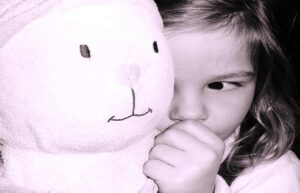What is behind the omens that can be seen in the reality check, versus the narrative dystopian landscapes in works such as Brave New World, 1984, or Fahrenheit 451? Is this not but the warning of the energy of the imagination transcending the immaterial and taking shape in a world that currently surpasses us day by day?
In the vicinity of the first German parliamentary democracy, during the Weimar Republic, with the German Empire defeated and in a social crisis with continuous outbursts and political demonstrations, Walter Gropious founded Die Staatliche Bauhaus (The State Bauhaus), the legendary school of design where ideals of modernity were concatenated – that should create an amalgam where art, crafts and technology diluted their borders, to give way to spaces, objects and artistic expressions.
This environment nourished with imaginative energy that would give way to devise and shape a new world, gave shelter to a handful of artists and creatives, such as Fritz Kuhr, who with his phrase Die ganze Welt ein Bauhaus, would allude to precisely that dimension where the creative expressions are combined with technological advances, but where the value of artisanal labor adds value to the result — in the best of cases.
Last year the itinerant exhibition for the 100 years of the Bauhaus showed not only what was produced there —in material, theoretical and epistemic terms— but also the power behind the form and the conducive aesthetics in charge of sensitive minds; Die ganze Welt ein Bauhaus or The whole world is a Bauhaus, refers to the power of aesthetics and its scope in time and space and defines the behavior of culture, a product of human creativity, but perhaps its author did not suspect that the The influence of the locution was sheltered by its Zeitgeist, a kind of contingency that could not soon be contained, which was already a kind of incessant play towards the dystopia that would veil the future and that even when the proposals of the national socialist movement under Hittler closed the 3 Bauhaus headquarters, the whole world was already a Bauhaus or less the momentum contained in each mind that managed to escape from there to spread the imprinting created there.
Die ganze Welt ein Bauhaus or The whole world is a Bauhaus, refers to the power of aesthetics and its scope in time and space and defines the behavior of culture, a product of human creativity
But, why speak of a dystopia that materializes in our daily life, if behind all this there was an intention to flood the world with art and beauty? The logic of the spaces in consonance with the objects that inhabit them, today, are an amalgam where the aspirations of the Bauhaus are based but at the same time are upset, turning the objects into necessities rather than motives for inspiration. Although each of them was born from an idea that is taking shape almost in a handcrafted way, it is hopelessly reproduced with the technological support that time allows. Thus, the narratives of Orwell and Huxley are the perfect prelude to receive Kuhr’s wishes, which in his absence no one managed to lead anywhere else.
Although in any other design school in Finland, the United Kingdom, or the United States it would have proliferated beyond Bauhasian mysticism, the Bauhaus is expanded by the subjective power of its spokesmen, the imperative search for equality, banners that were pillars of its pedagogical structure and the need to transcend borders in the face of the persecution of beliefs, biological and gender diversity, as well as any condition that does not correspond to the Status Quo. Paradoxically, the subjective entity converted into an agent, travels to disclose what was already uncontainable, the sum between form and function that reserves an idealistic intention inside, but that is transformed by obeying a productive system that does not distinguish the beautiful from the not beautiful; architecture, design, art serve other purposes, different from the ideals of the Bauhauslers.
the narratives of Orwell and Huxley are the perfect prelude to receive Kuhr’s wishes, which in his absence no one managed to lead anywhere else.
Thus, ideas perpetually travel from one side to another and are anchored in objects and spaces, they recreate themselves through use, they condition our way of living, they propose movements that should be incorporated into our daily lives; This was the power of the Bauhaus, an educational program that started from preponderance of preparation in the domain of form and what its alliance with artistic expressions implies, as well as what results from it when function adheres to said expressions that then were put into the hands of machines and whose expansion represents today, the now transformed spaces in which we currently live, occupied by objects that to a lesser or greater extent contain part of the way they are conceived today, where the Bauhaus is that seed that due to and despite its historical moment shapes our life, and it is then that Kuhr’s phrase takes shape again and whispers to us that it is time to drive the momentum of ideas in a better sense, instead of allowing them to reach such unexpected places as in Brave New World.
Is an Industrial Designer from the National Autonomous University of Mexico (UNAM) and a Doctor in Physical Anthropology from the National School of Anthropology and History (ENAH). Her academic work focuses on linking and fostering the interdisciplinary exchange between Anthropology and Design. She has long experience on ceramic materials at an industrial and artisanal level. Her interests also focus on musical experimentation, as well as gastronomic exploration and Culinary Arts.


